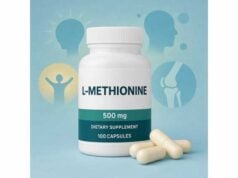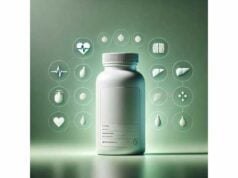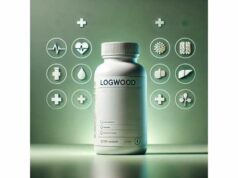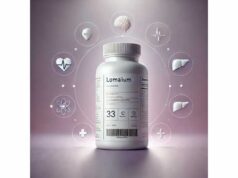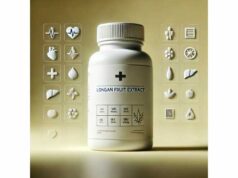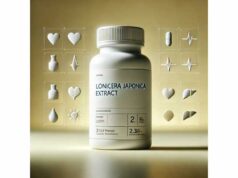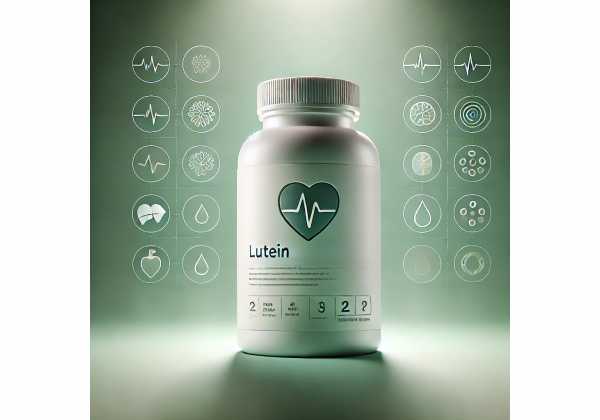
Lutein is a yellow-orange carotenoid concentrated in the macula—the tiny, central area of the retina responsible for sharp, detailed vision. Because the body cannot make lutein, we rely on foods like spinach, kale, and egg yolks or on supplements. Interest in lutein has grown for three practical reasons: it accumulates in the eye where it filters blue light; it is an antioxidant that helps neutralize reactive oxygen species; and it is often paired with zeaxanthin in evidence-based eye formulas. People use lutein to support macular health, reduce eye strain from prolonged screen use, and complement clinical care in age-related macular degeneration (AMD). Early research also explores roles in skin photoprotection and cognitive performance, but the strongest data remain in eye health. If you are considering lutein, dose and product form matter—so does taking it with a meal that contains fat to aid absorption. This guide explains how lutein works, who benefits most, how much to take, how to choose a product, and what to know about safety.
Key Insights
- Supports macular pigment and visual function, especially with 10–20 mg/day.
- May reduce AMD progression when used in tested combinations with zeaxanthin.
- Typical supplemental range: 10–20 mg/day lutein, often with 2–4 mg/day zeaxanthin.
- Avoid if you have a known allergy to marigold-derived extracts; consult your clinician if you use fat-blocking drugs.
- Take with a meal that contains fat to improve absorption and maintain steady blood levels.
Table of Contents
- What is lutein and how it works
- Proven benefits for eyesight
- How to take lutein correctly
- Dosage: how much per day
- Safety, side effects, and who should avoid
- Evidence at a glance: what studies show
What is lutein and how it works
Lutein is a xanthophyll carotenoid commonly found alongside zeaxanthin in leafy greens, corn, and egg yolks. In humans, lutein travels with lipoproteins in the bloodstream and preferentially accumulates in two tissues: the macula of the eye and the skin. In the macula it contributes to macular pigment—the dense, yellow layer that sits in front of photoreceptors. The pigment’s job is twofold. First, it filters high-energy visible (HEV) blue light before it reaches light-sensitive cells, lowering the amount of optical scatter and protecting against photo-oxidative stress. Second, lutein quenches free radicals generated during normal vision, helping preserve cellular lipids in the retina, which are rich in polyunsaturated fatty acids and particularly vulnerable to oxidation.
Zeaxanthin, a closely related carotenoid, co-localizes with lutein in the fovea (the center of the macula). Most comprehensive eye formulations use both because the retina appears to favor a roughly lutein-dominant but zeaxanthin-enriched pattern: lutein more broadly across the macula, zeaxanthin peaking at the center. This distribution suggests complementary roles in protecting central vision.
Beyond the eye, lutein is measurable in the skin and may contribute to photoprotection. Mechanistically, carotenoids absorb parts of the blue and visible spectrum and quench singlet oxygen, which can help raise the threshold for UV-induced erythema (redness). Observational data link higher dietary carotenoid intake with better skin carotenoid status and lower markers of oxidative stress. Controlled trials have begun to explore whether lutein-containing supplements reduce UV reactivity or pigmentation changes after standardized light exposure.
Another emerging area is cognition and visual processing speed. Because lutein crosses the blood–brain barrier and is detected in neural tissue, researchers study whether long-term intake influences brain function, especially in aging. Early trials show improvements in measures such as neural efficiency during visual tasks, though this research is still developing compared to the eye-health literature.
In supplements, lutein comes as “free lutein” or “lutein esters.” The body hydrolyzes esters to free lutein during absorption. Labels should indicate the “lutein as free equivalent” amount; well-formulated products make this clear. Since lutein is fat-soluble, taking it with a meal containing fat meaningfully improves bioavailability. Emulsified softgels can also help.
Proven benefits for eyesight
The most consistent, clinically relevant benefits of lutein are in retinal health and macular function. Three outcomes are especially well studied.
Macular pigment optical density (MPOD). MPOD is a noninvasive measure of the eye’s macular pigment. A stronger pigment acts like internal glare control, absorbing scattered blue light and stabilizing visual performance under bright or high-glare conditions. Controlled trials and meta-analyses show that lutein and zeaxanthin supplementation increases MPOD over weeks to months, with larger gains in individuals who start with low baseline pigment. These increases correlate with improved contrast sensitivity and reduced disability glare—real-world benefits for night driving, bright daylight, or extended screen use.
Visual function and performance. Even in people without diagnosed eye disease, modest improvements in contrast sensitivity, glare recovery, and photostress recovery have been reported after lutein supplementation. For people who experience digital eye strain, adding lutein and zeaxanthin may improve self-reported comfort and decrease glare sensitivity; these effects parallel MPOD changes and often emerge after 8–12 weeks of steady intake.
Age-related macular degeneration (AMD). The landmark AREDS2 research program modernized the original antioxidant-and-mineral formula by removing beta-carotene and adding lutein (10 mg) and zeaxanthin (2 mg). In individuals with intermediate AMD or advanced AMD in one eye, the updated formulation reduced the risk of progression to late AMD compared with no supplementation. While lutein alone is not a treatment for AMD, it is part of an evidence-based supportive strategy used by ophthalmologists to help slow disease progression in specific, clinically defined groups. Importantly, the AREDS2 formula is not recommended for everyone; its purpose is targeted risk reduction in people with intermediate disease or worse—not primary prevention in the general population.
Other potential benefits include less chromatic aberration and improvements in visual processing speed. These outcomes likely track with the optical filtering and antioxidant actions of macular pigment. People who work under strong LED illumination or spend many hours on screens may notice fewer symptoms related to glare and visual fatigue once MPOD has increased.
Because lutein accumulates gradually in the retina, benefits are not immediate. As a rule of thumb, plan on 8–12 weeks of consistent daily intake to see measurable pigment changes, with continued gains through 6 months. If you stop supplementing or significantly reduce dietary intake, blood levels fall within weeks and macular pigment may drift back toward baseline over time.
How to take lutein correctly
Absorption. Lutein is fat-soluble. Take it with a meal that contains dietary fat—such as eggs, olive oil, avocado, or yogurt. This can substantially increase blood levels compared with taking lutein on an empty stomach. Softgels that suspend lutein in oil tend to perform better than dry tablets for many people.
Pairing with zeaxanthin. Lutein is commonly paired with zeaxanthin because both build macular pigment. A practical ratio used in clinical formulations is 10 mg lutein with 2 mg zeaxanthin per day. Some products provide 20 mg lutein with 4 mg zeaxanthin. Either approach is reasonable for adults looking to support macular pigment, with higher doses often used for shorter periods to build levels and then maintained.
Choosing the form. You will see “free lutein” and “lutein esters.” Both are effective; esters are simply hydrolyzed during digestion. Pick a product that clearly states the free-lutein equivalent. Reputable brands disclose the marigold species (Tagetes erecta) and standardization.
Timing and consistency. Take lutein once daily with your largest meal, or split the dose with meals if you experience reflux. Consistency matters more than clock time; circulating lutein reflects cumulative intake over weeks.
Diet still counts. Supplements add to, not replace, dietary carotenoids. Foods that deliver lutein include spinach, kale, collards, parsley, peas, corn, and egg yolks. Pairing these foods with a fat source (e.g., sautéed greens in olive oil) increases uptake. For many people, a combined strategy—regular green-and-gold vegetables plus a daily supplement—achieves meaningful blood levels and macular pigment gains.
Stacking with other nutrients. In AREDS-style eye formulas for people with intermediate AMD or worse, lutein and zeaxanthin are combined with vitamin C, vitamin E, zinc, and copper. For general visual comfort, some people add omega-3s or saffron, though the quality of evidence varies. Avoid duplicating minerals at high doses across products unless a clinician recommends it.
Special groups. Vegetarians and vegans often benefit because lutein-rich greens are staples, but egg yolk lutein has high bioavailability. Older adults may need supplements more often because of reduced absorption or lower intake. People with fat malabsorption may require tailored guidance.
Measuring progress. Some optometry practices measure MPOD in-office. While not essential, this can personalize dosing. At home, practical markers include improved glare tolerance, easier night driving, and steadier visual comfort after long screen sessions.
Dosage: how much per day
General wellness and visual comfort. For adults without diagnosed eye disease, a common supplemental range is 10–20 mg/day lutein, typically paired with 2–4 mg/day zeaxanthin. Many notice benefits on glare and contrast within 8–12 weeks.
AMD-oriented support. Eye-care professionals often recommend the AREDS2-style combination: 10 mg lutein, 2 mg zeaxanthin, plus specific antioxidants and minerals, but only for people who meet the clinical criteria used in the trials (intermediate AMD in one or both eyes or advanced AMD in one eye). This formula is not intended for primary prevention in otherwise healthy eyes.
Loading and maintenance. Some clinicians use a higher dose (e.g., 20 mg/day lutein) for 8–12 weeks to build macular pigment, then step down to 10 mg/day for maintenance. This phased approach reflects how lutein accumulates in tissue and how quickly plasma levels respond to intake.
Dietary context. The average diet often delivers less than 2 mg/day of lutein, which is far below intakes associated with macular pigment gains. Rich dietary sources—1 cup cooked spinach or kale—can supply several milligrams, but the exact amount varies by variety and preparation. Combining food and supplements is practical for most people.
Timing. Take lutein with a meal containing fat to maximize absorption. If you split doses, keep the total daily target the same. Consistency day-to-day matters most.
Product quality. Choose brands that state the lutein source (marigold extract), specify free-lutein equivalents for ester forms, and provide third-party testing. If the label includes zeaxanthin, confirm the amount; some products use “meso-zeaxanthin,” an isomer relevant to macular pigment, while others list zeaxanthin broadly. Either can contribute to pigment, but labeling clarity helps you match trial-like intakes.
Who may need individualized dosing. People with fat-malabsorption conditions, those on very low-fat diets, and older adults may need tailored advice. If you have AMD, dosing should align with your eye-care professional’s plan, including mineral co-factors when appropriate.
Children and pregnancy. There is no established supplemental dose for children or for pregnancy/breastfeeding beyond normal dietary intake. Food sources are preferred in these groups unless a clinician recommends otherwise.
Safety, side effects, and who should avoid
Safety profile. Lutein from foods is widely consumed and considered safe. Supplemental lutein at typical study doses (10–20 mg/day) is generally well tolerated. There is no universally accepted tolerable upper intake level for lutein in adults, but more is not always better; extremely high carotenoid intakes may discolor the skin (benign yellow-orange tint known as carotenodermia) and can cause gastrointestinal upset.
Common, mild effects. A small number of people report heartburn, nausea, or loose stools when starting lutein—often resolved by taking the capsule with a full meal or switching to a different brand or softgel base. Rarely, sensitive individuals notice a harmless shift in skin tone after lengthy high-dose use.
Allergies. Most commercial lutein is extracted from marigold (Tagetes erecta). If you have a known allergy to marigold or related Asteraceae plants, avoid lutein supplements or consult an allergist.
Medication and nutrient interactions. Because lutein is fat-soluble, drugs that reduce fat absorption may reduce carotenoid uptake. Examples include orlistat (a lipase inhibitor used for weight loss) and certain bile acid sequestrants. Very high intakes of competing carotenoids can affect blood levels of each other; that is one reason modern eye formulas removed high-dose beta-carotene. If you take anticoagulants, antiplatelets, or multiple antioxidant products, share your full supplement list with your clinician to avoid unintended cumulative effects.
Pregnancy and breastfeeding. Prioritize dietary sources unless a clinician recommends otherwise. Lutein is present in breastmilk and is influenced by maternal intake; food-based strategies are preferred.
Children. Focus on colorful produce rather than supplements unless a pediatric clinician has a specific reason to use them.
Who should avoid or seek medical guidance first. People with diagnosed eye disease should not replace medical care with supplements. If you have intermediate AMD or worse, the decision to use an AREDS2-like formula belongs in an eye-care plan. Anyone with fat-malabsorption syndromes, gallbladder disease, or chronic pancreatitis should discuss carotenoid supplements with their clinician. Those with plant extract allergies should proceed cautiously.
Quality and adulteration. Choose reputable brands with third-party testing. Because lutein is often paired with other antioxidants, verify that amounts match your needs and do not duplicate minerals or vitamins at high doses across products.
Bottom line. For most adults, lutein at 10–20 mg/day with food has a strong safety profile. The most notable caution is reduced absorption with fat-blocking drugs and the need to tailor AMD formulations to the right patients.
Evidence at a glance: what studies show
Macular health and AMD progression. The modern standard for eye-support supplements in AMD is an antioxidant-and-mineral formula that includes lutein (10 mg) and zeaxanthin (2 mg). In people with intermediate AMD in one or both eyes—or advanced AMD in one eye—this regimen reduces the risk of progressing to advanced AMD compared with no supplementation. This finding updated earlier formulations by removing beta-carotene and adding the macular carotenoids.
Macular pigment and visual performance. Multiple randomized trials and systematic reviews report that lutein and zeaxanthin increase macular pigment optical density (MPOD) over 8–24 weeks. Gains in MPOD are associated with improvements in contrast sensitivity and glare tolerance. Effects are most pronounced in individuals with low baseline pigment or higher visual demands.
Cognition and neural efficiency. A randomized, placebo-controlled trial in healthy adults who spent extended time on screens found that lutein and zeaxanthin improved neural efficiency on visual motion tasks as measured by fMRI after 6 months. While preliminary compared with the eye data, this supports the biological rationale that lutein accumulates in brain tissue and can influence visual processing.
Skin photoprotection. Placebo-controlled human studies show that carotenoid supplements containing lutein can raise the threshold for UV-induced skin redness and reduce molecular markers of photo-oxidative stress after several weeks of daily intake. Reviews conclude that carotenoids act as adjunct, inside-out photoprotection, not a substitute for sunscreen. Benefits typically require continuous intake and are modest compared to topical sun filters—but they are measurable and may complement topical strategies.
Time course and durability. Blood lutein rises within days of consistent intake, while macular pigment usually increases detectably by 8–12 weeks, with further gains at 4–6 months. Stopping intake leads to gradual declines. This kinetics profile supports a “build and maintain” approach: steady daily intake to build tissue levels, then long-term maintenance for ongoing benefits.
Dose–response. Meta-analytic data support benefits across a range of intakes, with common doses of 10–20 mg/day for lutein. Pairing with zeaxanthin (2–4 mg/day) is a practical choice given their co-localization in macular pigment and the clinical evidence base behind combined use.
Unanswered questions. Research continues on optimal dosing for diverse populations, the role of meso-zeaxanthin, long-term cognitive outcomes, and interactions with lipid metabolism. As device use and LED exposure rise, trials increasingly measure functional outcomes that matter in daily life—glare recovery, night driving comfort, and visual fatigue—alongside structural markers like MPOD.
Takeaway. Lutein is one of the few dietary compounds with targeted, tissue-specific accumulation in the human eye and a track record of improving clinically relevant optical and functional endpoints, especially when paired with zeaxanthin at tested doses.
References
- AREDS 2 Supplements for Age-Related Macular Degeneration (AMD) — 2021 (Guidance)
- Antioxidant vitamin and mineral supplements for slowing the progression of age-related macular degeneration — 2023 (Systematic Review)
- The Effect of Lutein/Zeaxanthin Intake on Human Macular Pigment Optical Density: A Systematic Review and Meta-Analysis — 2021 (Systematic Review)
- The effects of lutein and zeaxanthin on brain response to visual motion: An fMRI study — 2022 (RCT)
- Molecular evidence that oral supplementation with lycopene or lutein protects human skin against ultraviolet radiation: results from a double-blinded, placebo-controlled, crossover study — 2017 (RCT)
Disclaimer
This article is for general education and is not a substitute for personalized medical advice, diagnosis, or treatment. Always talk with a qualified health professional about supplements, especially if you have an eye condition, are pregnant or breastfeeding, take prescription medications, or have chronic health issues. Do not change prescribed treatments based on this information. If you think you have a medical emergency or your vision is worsening, seek care promptly.
If you found this guide useful, consider sharing it on Facebook, X (formerly Twitter), or your favorite platform, and follow us for more evidence-based wellness articles. Your support helps us keep creating high-quality, reader-first content.

